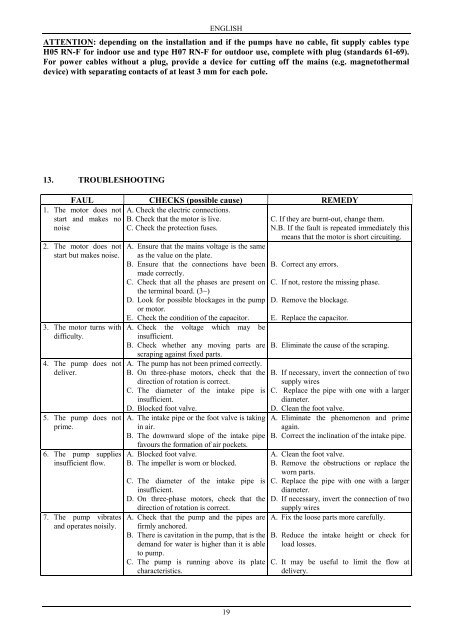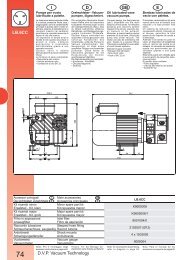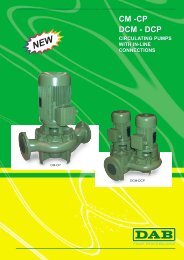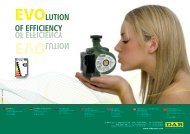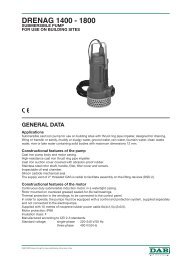Create successful ePaper yourself
Turn your PDF publications into a flip-book with our unique Google optimized e-Paper software.
ENGLISH<br />
ATTENTION: depending on the installation and if the pumps have no cable, fit supply cables type<br />
H05 RN-F for indoor use and type H07 RN-F for outdoor use, complete with plug (standards 61-69).<br />
For power cables without a plug, provide a device for cutting off the mains (e.g. magnetothermal<br />
device) with separating contacts of at least 3 mm for each pole.<br />
13. TROUBLESHOOTING<br />
FAUL CHECKS (possible cause) REMEDY<br />
1. The motor does not<br />
start and makes no<br />
noise<br />
2. The motor does not<br />
start but makes noise.<br />
3. The motor turns with<br />
difficulty.<br />
4. The pump does not<br />
deliver.<br />
5. The pump does not<br />
prime.<br />
6. The pump supplies<br />
insufficient flow.<br />
7. The pump vibrates<br />
and operates noisily.<br />
A. Check the electric connections.<br />
B. Check that the motor is live.<br />
C. Check the protection fuses.<br />
A. Ensure that the mains voltage is the same<br />
as the value on the plate.<br />
B. Ensure that the connections have been<br />
made correctly.<br />
C. Check that all the phases are present on<br />
the terminal board. (3~)<br />
D. Look for possible blockages in the pump<br />
or motor.<br />
E. Check the condition of the capacitor.<br />
A. Check the voltage which may be<br />
insufficient.<br />
B. Check whether any moving parts are<br />
scraping against fixed parts.<br />
A. The pump has not been primed correctly.<br />
B. On three-phase motors, check that the<br />
direction of rotation is correct.<br />
C. The diameter of the intake pipe is<br />
insufficient.<br />
D. Blocked foot valve.<br />
A. The intake pipe or the foot valve is taking<br />
in air.<br />
B. The downward slope of the intake pipe<br />
favours the formation of air pockets.<br />
A. Blocked foot valve.<br />
B. The impeller is worn or blocked.<br />
C. The diameter of the intake pipe is<br />
insufficient.<br />
D. On three-phase motors, check that the<br />
direction of rotation is correct.<br />
A. Check that the pump and the pipes are<br />
firmly anchored.<br />
B. There is cavitation in the pump, that is the<br />
demand for water is higher than it is able<br />
to pump.<br />
C. The pump is running above its plate<br />
characteristics.<br />
19<br />
C. If they are burnt-out, change them.<br />
N.B. If the fault is repeated immediately this<br />
means that the motor is short circuiting.<br />
B. Correct any errors.<br />
C. If not, restore the missing phase.<br />
D. Remove the blockage.<br />
E. Replace the capacitor.<br />
B. Eliminate the cause of the scraping.<br />
B. If necessary, invert the connection of two<br />
supply wires<br />
C. Replace the pipe with one with a larger<br />
diameter.<br />
D. Clean the foot valve.<br />
A. Eliminate the phenomenon and prime<br />
again.<br />
B. Correct the inclination of the intake pipe.<br />
A. Clean the foot valve.<br />
B. Remove the obstructions or replace the<br />
worn parts.<br />
C. Replace the pipe with one with a larger<br />
diameter.<br />
D. If necessary, invert the connection of two<br />
supply wires<br />
A. Fix the loose parts more carefully.<br />
B. Reduce the intake height or check for<br />
load losses.<br />
C. It may be useful to limit the flow at<br />
delivery.


